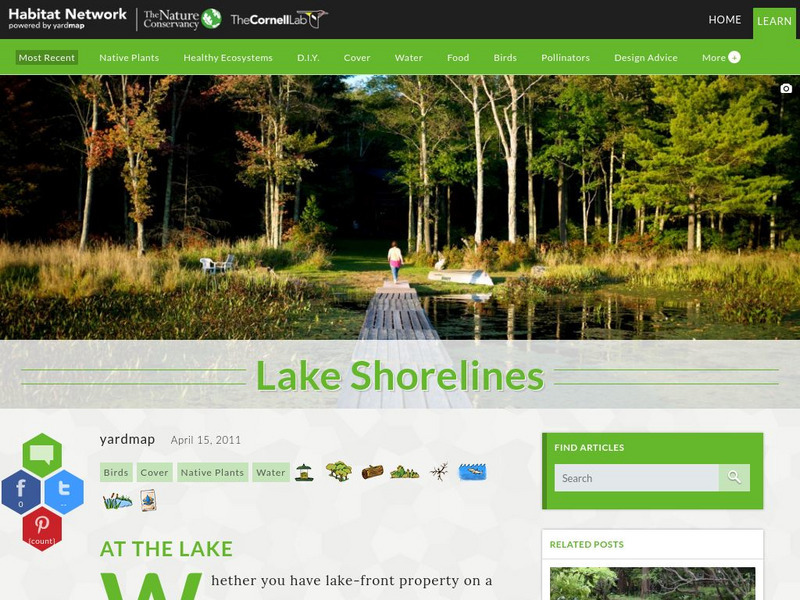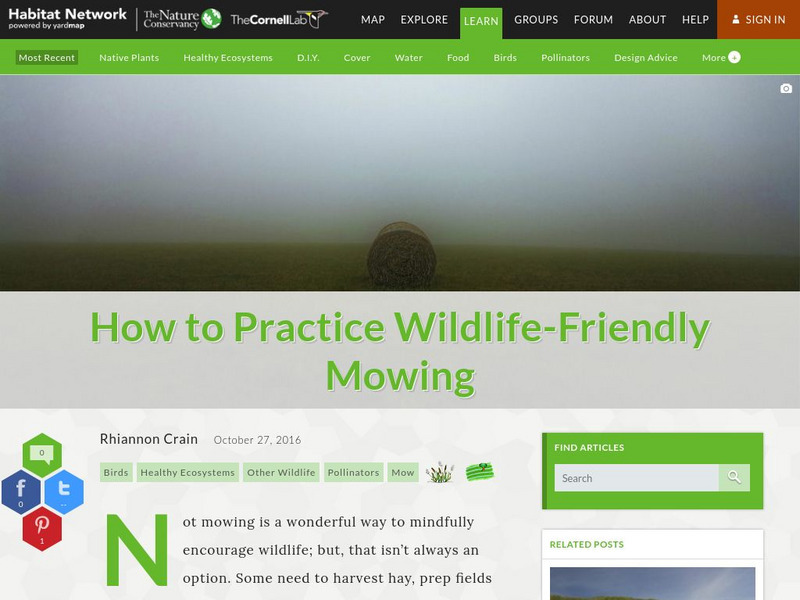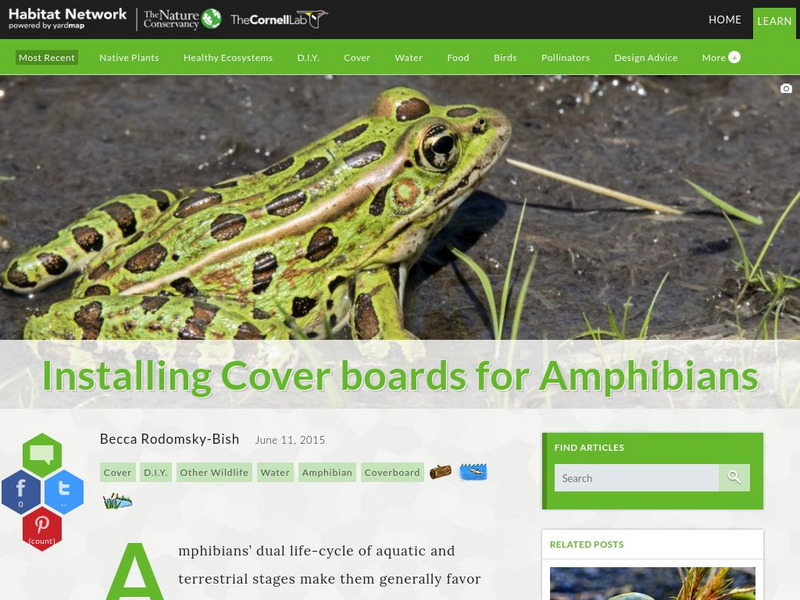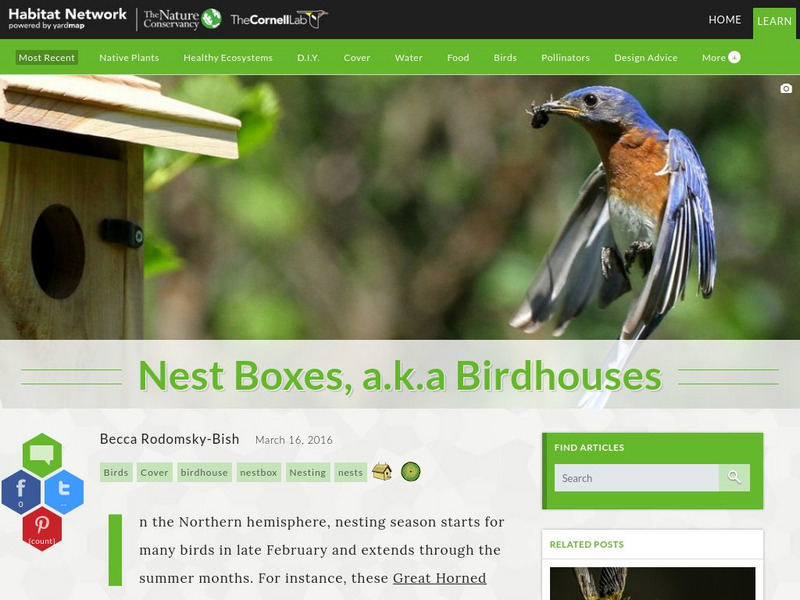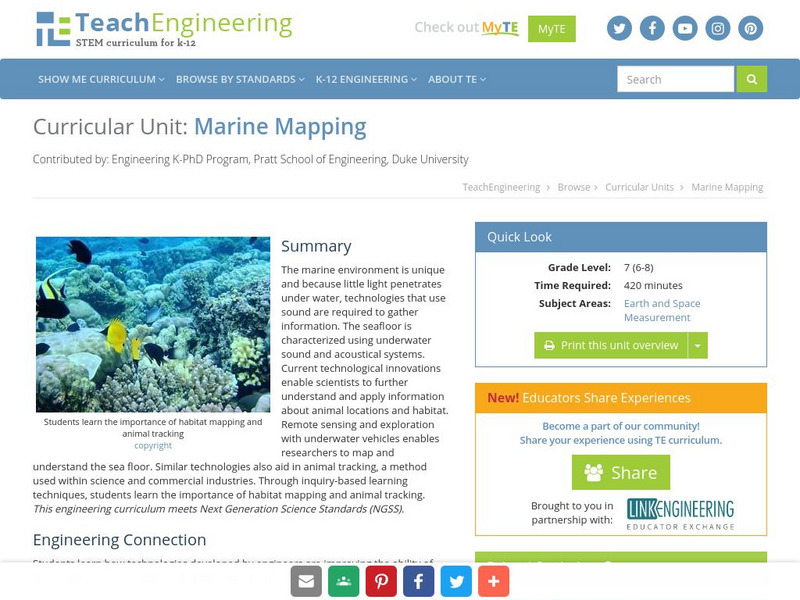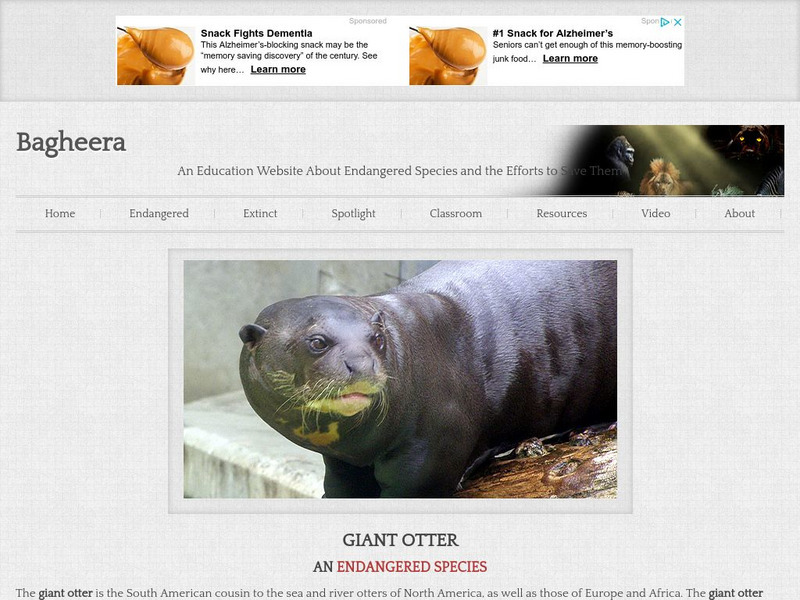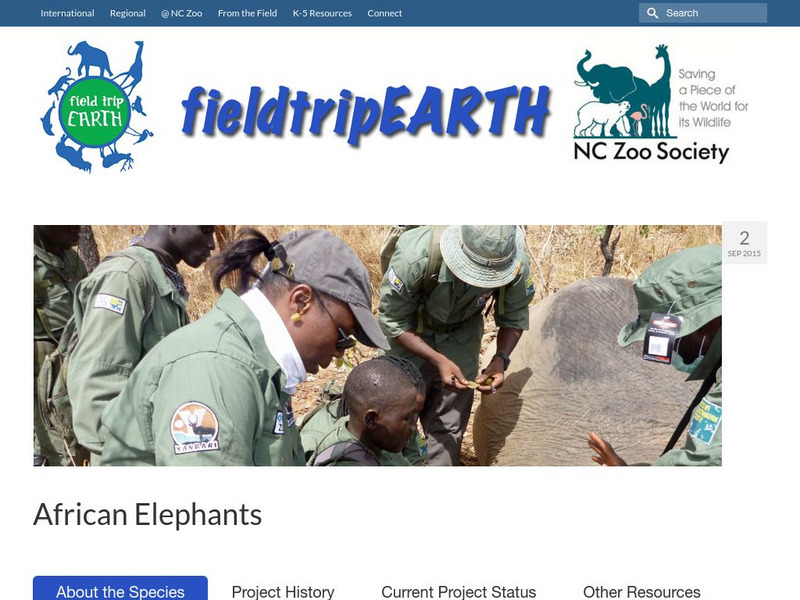EL Education
El Education: Local Habitat Survey and Animal Research
Students observe animals in several habitats and then choose one animal to research. Students learn about physical adaptations that help each animal live successfully in its habitat and then draw a picture of their animal which is later...
Alabama Learning Exchange
Alex: Beanie Baby Habitats Collaborative Project
With the booming market of "Beanie Baby" type stuffed animals being so prominent in students' lives, this project brings that interest into the classroom through the use of research, science, hands-on experiences, and technology. The...
Cornell Lab of Ornithology
Habitat Network: Habitat Feature: Bat Houses
Find out how providing bat houses can be beneficial to a habaitat.
Cornell Lab of Ornithology
Habitat Network: Habitat Feature: Sun Perches
See why many species use perches near their water source to take in the sun's warmth.
Cornell Lab of Ornithology
Habitat Network: Lake Shorelines
Become a citizen scientist, and find out how to turn a shoreline landscape into a bird haven.
Cornell Lab of Ornithology
Habitat Network: How to Practice Wildlife Friendly Mowing
When it is time to mow, find out the simple strategies to consider to minimize negative impacts on wildlife.
Cornell Lab of Ornithology
Habitat Network: Installing Cover Boards for Reptiles
Learn how to provide a cover board for reptiles who generally prefer drier conditions.
Cornell Lab of Ornithology
Habitat Network: Installing Cover Boards for Amphibians
Find out how to make a cover board for Amphibians' dual life-cycle of aquatic and terrestrial stages.
Cornell Lab of Ornithology
Habitat Network: Nest Boxes, a.k.a Birdhouses
Learn about the importance of bird house boxes in backyard habitats.
Cornell Lab of Ornithology
Habitat Network: On a Farm
Learn about the effect that agricultural advancement has had on bird diversity in those environments.
TeachEngineering
Teach Engineering: Marine Mapping
The marine environment is unique and requires technologies that can use sound to gather information since there is little light underwater. The seafloor is characterized using underwater sound and acoustical systems. Current...
Penguin Science
Penguin Science: Penguins Marching Into the Classroom
Follow Adelie Penguin families as they raise their chicks. Daily pictures (November through January) from the penguin colony on Ross Island, Antarctica. are posted with data for students to keep a field journal. Inquiry classroom...
National Geographic Kids
National Geographic Kids: Animals: Hippopotamus
Multi-media National Geographic site includes video and audio clips about hippopotamuses. Fun facts are great for students doing research projects and you can send a postcard to a friend.
CPALMS
Cpalms: Home Is Where the Heart Is: Researching Habitats
[Free Registration/Login Required] In this lesson plan, students will learn about different types of habitats as they gather information based on provided research questions. Students will summarize the information from their research in...
Science Buddies
Science Buddies: M&m Survival Challenge
In the wild, there are two types of animals: the hunters and the hunted. A good predator is always on the prowl for fresh prey. What can an animal do to stay off of the menu? Find out how some animals use camouflage, and why sometimes it...
Alabama Learning Exchange
Alex: Surviving in the World!
After learning about the survival traits of the chameleon, students will work in groups to research the survival traits of other animals on the Internet and will create a slide show using the collected information to share with the...
US Geological Survey
Usgs Kids: Mealworm Ranch
A fun, hands-on project that will allow your students see first-hand how metamorphosis works. Students observe mealworms develop and change right before their eyes.
World Wildlife Fund for Nature
World Wildlife Fund Russia
This resource provides bilingual news and facts about wildlife issues and projects across Russia. A small collection of beautiful images and video clips. Special section for kids with puzzles and nature-related games such as Rescue the...
Writing Fix
Writing Fix: Details and Vocabulary: Using Content Based Vocabulary
In this lesson plan, students will write a descriptive paragraph regarding an animal and its habitat, or a character in a particular setting. Great cross-curricular usage of vocabulary.
Bagheera
Bagheera: Giant Otter
This site takes a look at the physical characteristics and habitat of the giant otter. Special focus is given to why this animal is endangered, and conservation projects currently underway. Additional learning activities are also...
California State University
Cardboard Tree and Endangered Animals Lesson
Two short art lessons in one that introduce young learners to the idea of extinct animals and habitats. Each student will be creating and painting a habitat and assembling an owl. This could be adaptable to use the extinct animal of your...
Tramline
Virtual Field Trip: Temperate Forest Biome
Travel with your students on a Virtual Field Trip to learn about Temperate Forest Biomes. You will also discover many informative and interactive websites.
EL Education
El Education: Field Guide to the Aquatic Gardens at Forest Park
3rd grade students in Springfield, Massachusetts created this field guide as part of a learning expedition on ecosystems and pond life. Students did fieldwork in the city park and worked with local experts, closely examining the ponds....
Other
Field Trip Earth: Elephants of Cameroon
Field Trip Earth takes you on an exciting adventure to learn about the endangered African Elephant. On this site, one can explore this project, the species, and its habitat. Also learn what threatens this animal in its own environment.






